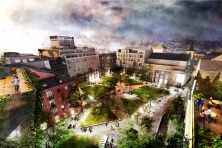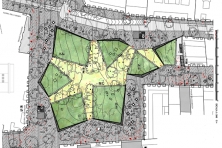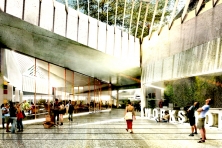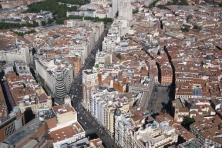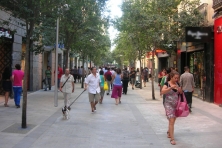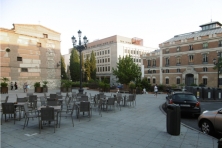ON THE BLUE SUMMER EVENINGS
Madrid (ES) - Runner up
TEAM DATA
Team Representative: Santiago Cifuentes Barrio (ES) – architect
Contributors: Eva Cuadrado (ES), Juan Francisco Buendía – architects
C/ Zurbarán, 5. Entresuelo, 28010 Madrid (ES)
+34 91 026 45 84 / +34 679 551 448 – info@cifuentescostales.com – cifuentescostales.com
See the complete listing of portraits here
See the site page here

S. Cifuentes Barrio
INTERVIEW
Click on the images to enlarge
1. How did you form the team for the competition?
Cifuentes Costales Arquitectura is an office from Madrid established in 2010. We ared used to collaborate with many specialized professionals, depending on the requirements of each project, but given the experience we have in the fields of landscape and urban design, we have fully developed a proposal for the competition internally.
2. How do you define the main issue of your project, and how did you answer on this session main topic: the place of productive activities within the city?
The purpose of the competition was to reorganize six squares in Madrid, located in the surroundings of Gran Vía, the main axial centrality of Madrid, congested by the permanent flux of visitors and a very important volume of road traffic. From the very beginning we saw very clearly that our project could not be limited to an urban design intervention for each public space. On the contrary, we believed that it was a real opportunity to think about a global strategy for the urban redevelopment of the city centre, integrating the reorganization of pedestrian and green areas, vehicle traffic and urban and productive facilities.
3. How did this issue and the questions raised by the site mutation meet?
Our proposal focuses on two main strategies. Greenscape, based on the integration of nature into the city through the insertion of 10.000 sqm of new grass surface distributed across the six squares. These squares are connected by a new green promenade, a gentle stroll around the city centre under the shading trees, in contrast to the bustle of the commercial avenue. On the other hand, Groundscape, is focusing on the recuperation of public space for the citizens, relocating loading bays and productive facilities in the existing parking spaces below ground, to foster a sense of community and people interaction, in an urban centre that has been undergoing a progressive process of gentrification during these years.
4. Have you treated this issue previously? What were the reference projects that inspired yours?
Since we started our career we were firmly involved in urban planning, collaborating in the development of some global operations in Spain, in which the recovery of public space played a key role. In fact in 2017 we finished the restoration of a big urban park in Madrid where we could put into practice some of the ideas we have included in our proposal for Europan 14. Of course this ideology is inspired by the 'life between buildings' concept studied and implemented by the Danish team led by Jan Gehl, who have developed many tools to analyze and encourage the urban public activity. Their theories about 'human scale' in architectural design have had wide influence around the world during the last decades: Times Square, Copenhaguen, Oslo, San Francisco, Sao Paulo, Melbourne...
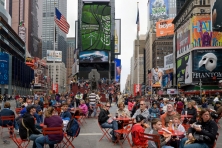
5. Urban-architectural projects like the ones in Europan can only be implemented together with the actors through a negotiated process and in time. How did you consider this issue in your project?
The experience of the huge urban renovation of public space in Manhattan, implemented by the Bloomberg administration until 2013 and commissioned by Amanda Burden and Jannete Sadik-Khan, is a good testing ground for every urban planner in order to evaluate the most efficient approach to turn this ideas into reality: certain methods for the quantitative analysis of human behavior, temporary pedestrianization to study the future use of areas closed to vehicle traffic, insertion of nature into the city, turning abandoned infrastructures into green areas... We believe that many of these measures should be developed since it would establish a dialogue between the government and the public, promoting the creation of citizen platforms at local level, in order to collect ideas and requirements and get feedback about the finished projects.
6. Is it the first time you have been awarded a prize at Europan? How could this help you in your professional career?
Since our first prize in Europan 8 in Logroño (ES), our work have been recognized in many other architectural competitions, that have been our main source of commissions along these years.
